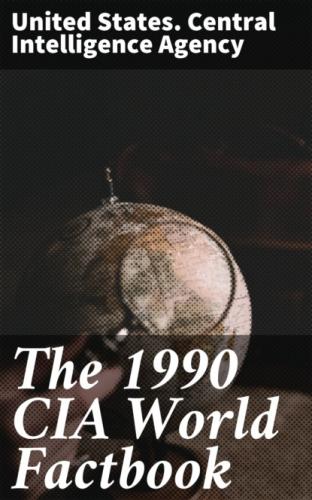Labor force: 868,300; industry and commerce 35.1%, government and services 33%, agriculture 27%, other 4.9% (1985 est.)
Organized labor: 15.1% of labor force
- Government
Long-form name: Republic of Costa Rica
Type: democratic republic
Capital: San Jose
Administrative divisions: 7 provinces (provincias, singular—provincia);
Alajuela, Cartago, Guanacaste, Heredia, Limon, Puntarenas, San Jose
Independence: 15 September 1821 (from Spain)
Constitution: 9 November 1949
Legal system: based on Spanish civil law system; judicial review of legislative acts in the Supreme Court; has not accepted compulsory ICJ jurisdiction
National holiday: Independence Day, 15 September (1821)
Executive branch: president, two vice presidents, Cabinet
Legislative branch: unicameral Legislative Assembly (Asamblea Legislativa)
Judicial branch: Supreme Court (Corte Suprema)
Leaders:
Chief of State and Head of Government—President Rafael Angel
CALDERON Fournier (since 8 May 1990); First Vice President German SERRANO
Pinto (since 8 May 1990); Second Vice President Arnoldo LOPEZ Echandi
(since 8 May 1990)
Political parties and leaders: National Liberation Party (PLN),
Carlos Manuel Castillo; Social Christian Unity Party (PUSC), Rafael Angel
Calderon Fournier; Marxist Popular Vanguard Party (PVP), Humberto Vargas
Carbonell; New Republic Movement (MNR), Sergio Erick Ardon;
Progressive Party (PP), Javier Solis; People's Party of Costa Rica
(PPC), Lenin Chacon Vargas; Radical Democratic Party (PRD), Juan Jose
Echeverria Brealey
Suffrage: universal and compulsory at age 18
Elections:
President—last held 4 February 1990 (next to be held February
1994);
results—Rafael Calderon Fournier 51%, Carlos Manuel Castillo 47%;
Legislative Assembly—last held 4 February 1990 (next to be held February 1994); results—percent of vote by party NA; seats—(57 total) PUSC 29, PLN 25, PVP/PPC 1, regional parties 2
Communists: 7,500 members and sympathizers
Other political or pressure groups: Costa Rican Confederation of
Democratic Workers (CCTD; Liberation Party affiliate), Confederated Union of
Workers (CUT; Communist Party affiliate), Authentic Confederation of
Democratic Workers (CATD; Communist Party affiliate), Chamber of Coffee
Growers, National Association for Economic Development (ANFE), Free Costa Rica
Movement (MCRL; rightwing militants), National Association of Educators (ANDE)
Member of: CACM, FAO, G-77, IADB, IAEA, IBRD, ICAO, ICO, IDA,
IDB—Inter-American Development Bank, IFAD, IFC,
ILO, IMF, IMO, INTELSAT, INTERPOL, IPU, ITU, IWC—International Wheat Council,
OAS, ODECA, PAHO, SELA, UN, UNESCO, UPEB, UPU, WHO, WMO, WTO
Diplomatic representation: Ambassador Danilo JIMENEZ; Chancery at Suite 211, 1825 Connecticut Avenue NW, Washington DC 20009; telephone (202) 234–2945 through 2947; there are Costa Rican Consulates General at Albuquerque, Boston, Houston, Los Angeles, Miami, New Orleans, New York, San Antonio, San Diego, San Francisco, San Juan (Puerto Rico), and Tampa, and Consulates in Austin, Buffalo, Honolulu, and Raleigh; US—Ambassador (vacant); Embassy at Pavas Road, San Jose (mailing address is APO Miami 34020); telephone p506o 33–11-55
Flag: five horizontal bands of blue (top), white, red (double width), white, and blue with the coat of arms in a white disk on the hoist side of the red band
- Economy Overview: In 1988 the economy grew at a 3.8% rate, a drop from the 5.1% of the previous year. Gains in agricultural production (on the strength of good coffee and banana crops) and in construction, were partially offset by declines in the rates of growth for the industry and commerce sectors. In 1988 consumer prices rose by nearly 21% followed by a 10% rise in 1989. Unemployment is officially reported at about 6%, but much underemployment remains. External debt, on a per capita basis, is among the world's highest.
GDP: $4.7 billion, per capita $1,630; real growth rate 3.8% (1988)
Inflation rate (consumer prices): 10% (1989)
Unemployment rate: 5.5% (March 1989)
Budget: revenues $719 million; expenditures $808 million, including capital expenditures of $103 million (1988)
Exports: $1.3 billion (f.o.b., 1988); commodities—coffee, bananas, textiles, sugar; partners—US 75%, FRG, Guatemala, Netherlands, UK, Japan
Imports: $1.4 billion (c.i.f., 1988); commodities—petroleum, machinery, consumer durables, chemicals, fertilizer, foodstuffs; partners—US 35%, Japan, Guatemala, FRG
External debt: $4.5 billion (1989)
Industrial production: growth rate 2.1% (1988)
Electricity: 909,000 kW capacity; 2,928 million kWh produced, 990 kWh per capita (1989)
Industries: food processing, textiles and clothing, construction materials, fertilizer
Agriculture: accounts for 20–25% of GDP and 70% of exports; cash commodities—coffee, beef, bananas, sugar; other food crops include corn, rice, beans, potatotes; normally self-sufficient in food except for grain; depletion of forest resources resulting in lower timber output
Illicit drugs: illicit production of cannabis on small scattered plots; transshipment country for cocaine from South America
Aid: US commitments, including Ex-Im (FY70–88), $1.3 billion; Western (non-US) countries, ODA and OOF bilateral commitments (1970–87), $706 million; Communist countries (1971–88), $27 million
Currency: Costa Rican colon (plural—colones); 1 Costa Rican colon (C) = 100 centimos
Exchange rates: Costa Rican colones (C) per US$1—84.689 (January 1990), 81.504 (1989), 75.805 (1988), 62.776 (1987), 55.986 (1986), 50.453 (1985)
Fiscal year: calendar year
- Communications
Railroads: 950 km total, all 1.067-meter gauge; 260 km electrified
Highways: 15,400 km total; 7,030 km paved, 7,010 km gravel, 1,360 km unimproved earth
Inland waterways: about 730 km, seasonally navigable
Pipelines: refined products, 176 km
Ports: Puerto Limon, Caldera, Golfito, Moin, Puntarenas
Merchant marine: 2 cargo ships (1,000 GRT or over) totaling 4,279 GRT/6,602 DWT
Civil air: 9 major transport aircraft
Airports: 193 total, 177 usable; 25 with permanent-surface runways; none with runways over 3,659 m; 1 with runways 2,440–3,659 m; 11 with runways 1,220–2,439 m
Telecommunications: very good domestic telephone service; 292,000 telephones; connection into Central American Microwave System; stations—71 AM, no FM, 18 TV, 13 shortwave; 1 Atlantic Ocean INTELSAT earth station
- Defense Forces Branches: Civil Guard, Rural Assistance Guard; note—Constitution prohibits armed forces
Military
